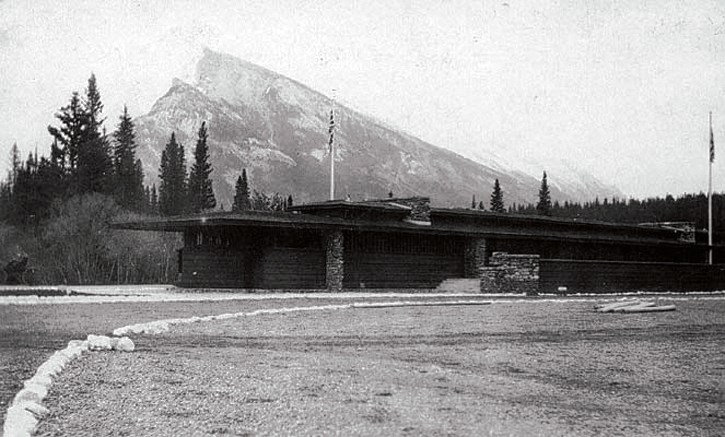Orchestrators of a plan to build a replica of an iconic Frank Lloyd Wright pavilion in Banff National Park appear to be jumping the gun – without the full endorsement of town council behind them.
The Frank Lloyd Wright Revival Initiative – a group dedicated to re-building demolished Wright-designed structures on their original sites – has announced a team of professors from Toronto’s Ryerson University won a bid to update Wright’s original drawings of the Banff Pavilion, one of only two of his designs in Canada.
Banff council has voted to support the Frank Lloyd Wright Revival Initiative in principle, but directed the group to conduct a feasibility study and cost analysis to help the municipality better understand the implications of proceeding with the project.
“We’re still awaiting a followup response to the resolution of council and we haven’t seen evidence indicating all the work has occurred to date,” said Randall McKay, the Town of Banff’s planning and development director.
“We’re anticipating this work will be done at some point and forwarded to us prior to proceeding any further with this initiative.”
Specifically, council asked that the study include an overview of the scope of work required to build the structure, evaluation of site location alternatives, environmental assessment requirements and estimates of building design and construction costs.
It’s also to include any infrastructure improvements needed to service the building, long-term operation and maintenance costs, funding sources, program options and an assessment of the economic impact of the project on the community.
The estimated price tag to build a replica of the pavilion at the Banff recreation grounds, which was built in 1913 and demolished in the late 1930s, is between $6 million and $8 million.
Last month, from more than 30 submissions to the Frank Lloyd Wright Revival Initiative, a team from Toronto’s Ryerson University won a bid call to update the original Banff Pavilion drawings.
In addition, the Ryerson team will complete a literature review on the building, conduct research and make its findings public to educate and engage students, faculty, scholars and the broader community in the project.
According to the Frank Lloyd Wright Revival Initiative, updating the drawings is critical to the next phase of the pavilion’s revival. When complete, they will be used in an application to the Town of Banff.
Initiative spokesperson Evie Eshpeter said it’s crucial that whoever was chosen for the role understood and respected the group’s intent.
“This isn’t a collaboration per se, rather a technical update to make the structure viable again,” said Eshpeter. “This in no way diminishes the import of the task, which is restoring the work of a world-renowned architect.”
Leading the Ryerson team is Yew-Thong Leong, a practicing architect and professor at the university’s department of architectural science.
“We are thrilled to be part of this project. This is a once-in-a-lifetime opportunity for any architect or scholar – particularly from Canada,” said Leong in a news release.
“We hope our research and work will make a significant contribution to both international architecture study and the community of Banff.”
Over the course of Wright’s life, he designed and built more than 500 structures, many of which have become icons of design, including The Guggenheim Museum in New York and Fallingwater in Pennsylvania.
The Banff Pavilion is one of only two Wright buildings in Canada. The other is a private cottage in Ontario, which still stands.
Wright and Francis Conroy Sullivan, Wright’s only Canadian student, designed the Banff National Park Pavilion in 1911 at the request of the federal government, at a time when tourism was booming in Banff.
Construction began in 1913 and was finished the following year. Shortly after completion, it was used during the First World War as a quartermaster’s store by the federal defence department.
But flooding between 1920 and 1933 caused structural damage and, with no funds made available for repairs, the pavilion was demolished in 1938. Today, there is no evidence of the original structure.




